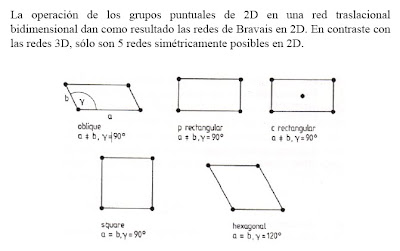The electron diffraction is a technique which makes it possible to study the structure and the symmetry of surfaces. This technique rests on the undulatory nature of the electrons and the strong interaction of those with the matter. The analysis of surface can be obtained by using electrons of low kinetic energy (50 eV <> 1 keV), it is the case of RHEED (Reflexion High Energy Electron Diffraction) method. Taking into account the higher value of the mean free path, it is then necessary to work in grazing incidence to have only access to the structure of the surface atomic planes. Let us note that diffraction RHEED became an essential tool to follow the evolution of the growth in real time.
Low electron diffraction: LEED
The figure below schematizes the principle of the low electrons diffraction. In reciprocal space, the diffraction condition is graphically represented by the construction of the Ewald sphere. Diffraction takes place when the sphere of K = 2p /λ ray intercepts a node of the reciprocal lattice of the crystal. The diffraction pattern obtained then makes it possible to visualize the reciprocal space of the studied surface.

Principle of the low electrons diffraction in the geometry used at the laboratory. An electron beam whose energy can increase until a hundred electronvolts arrives under an incidence of 45° on the sample. The diffracted electrons are then accelerated to be able to excite a fluorescent screen. The diffraction pattern is then recorded using a camera CCD.
High electron diffraction under grazing incidence: RHEED
In an experiment of RHEED diffraction, the electrons arrive under an incidence of 1° at 4°. The electron beam energy is about of 30 keV. The diffracted electrons make fluorescer a screen and the pattern can then be recorded using a CCD camera.
With such an energy the scattering atomic elastic cross section is much larger in the direction of propagation (forward scattering phenomenon). The surface sensitivity is obtained by adopting a configration in grazing incidence. In this case, only the electrons which interact with surface (approximately 1 Nm) undergo elastic collisions. They are at the origin of the diffraction pattern. The inelastic scattering of the electrons transforms the parallel and monocinetic beam in a divergent beam and quasi-monocinetic beam. Probed depth then reached approximately 100 nanometers. The elastic scattering of these electrons is at the origin of the lines of Kikuchi, which are the signature of a well crystallized material. The diffused inelastic electrons contribute to the continuous bottom.

Configration of the high energy electrons diffraction in grazing incidence in real space (a) and reciprocal space (b)
Geometrical construction in reciprocal space differs from that of the LEED compared to the position of the electrons beam and to the energy of the primary electrons. Theoretically, the intersection of the streaks with the Ewald sphere should form points. However the ray of this one is very large for the energy considered compared to the reverse of the interatomic distances. This combined with dispersion in angle and energy of the electrons beam like to the imperfect crystalline quality of surface, makes that the diffraction pattern appears in the form of streaks.
This discussion is true for a perfectly plane surface. Roughness leads the electrons to cross the matter small islands and creates a diagram of spots. If surface is plane and present a perpendicular textured structure to surface, rings centered on the specular spot appear (see patterns below).

RHEED diffraction patterns of a perfectly smooth surface under the ideal conditions of diffraction (a), of a surface smoothes under the real conditions of diffraction (b), of a rough surface (c), a textured surface (d).
Electronica en Estado Solido
Greiner A. Gonzalez R.
http://iramis.cea.fr/en/Phocea/Vie_des_labos/Ast/ast_sstechnique.php?id_ast=506


































